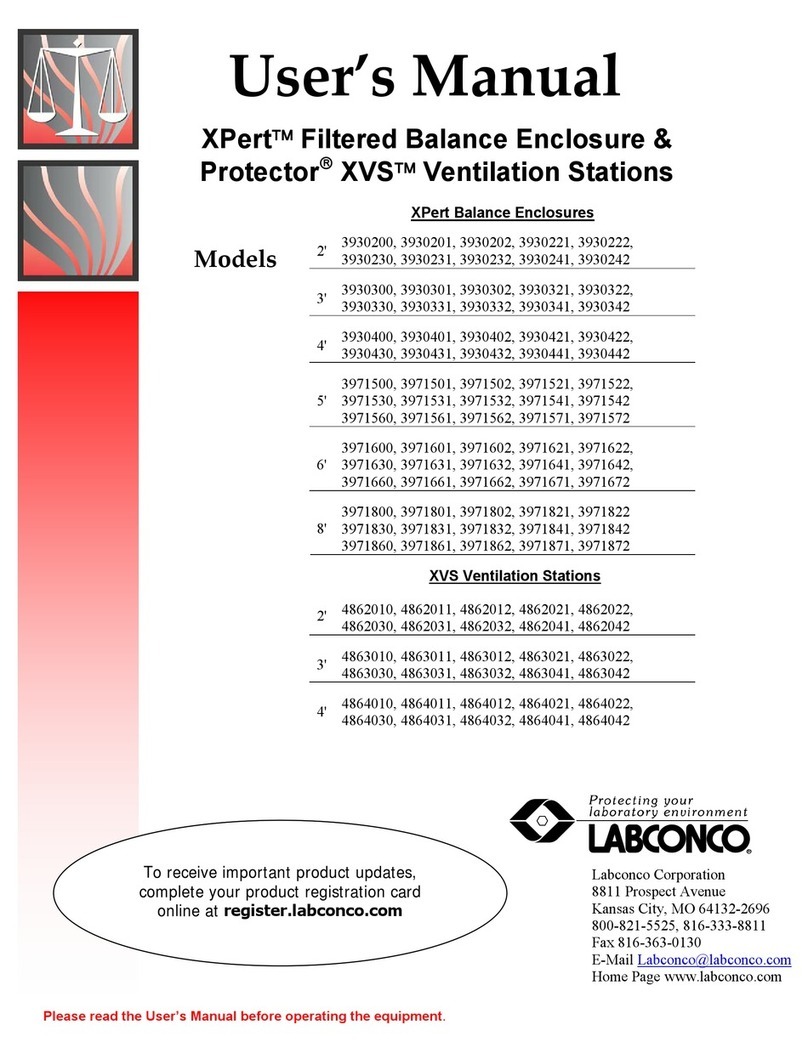
XPertFiltered Balance Enclosures &
ProtectorXVS™Ventilation Stations
Models
3930200, 3930201, 3930202, 3930221, 3930222,
3930230, 3930231, 3930232, 3930241, 3930242
4862010, 4862011, 4862012, 4862021, 4862022,
4862030, 4862031, 4862032, 4862041, 4862042
3930300, 3930301, 3930302, 3930310, 3930321, 3930322,
3930330, 3930331, 3930332, 3930341, 3930342, 3970100
4863010, 4863011, 4863012, 4863021, 4863022,
4863030, 4863031, 4863032, 4863041, 4863042
3930400, 3930401, 3930402, 3930410, 3930421, 3930422,
3930430, 3930431, 3930432, 3930441, 3930442, 3970500
4864010, 4864011, 4864012, 4864021, 4864022,
4864030, 4864031, 4864032, 4864041, 4864042
3971500, 3971501, 3971502, 3971521, 3971522,
3971530, 3971531, 3971532, 3971541, 3971542,
3971560, 3971561, 3971562, 3971571, 3971572
4865010, 4865011, 4865012, 4865021, 4865022,
4865030, 4865031, 4865032, 4865041, 4865042,
4865060, 4865061, 4865062, 4865071, 4865072
3971600, 3971601, 3971602, 3971621, 3971622,
3971630, 3971631, 3971632, 3971641, 3971642,
3971660, 3971661, 3971662, 3971671, 3971672
4866010, 4866011, 4866012, 4866021, 4866022,
4866030, 4866031, 4866032, 4866041, 4866042,
4866060, 4866061, 4866062, 4866071, 4866072
3971800, 3971801, 3971802, 3971821, 3971822,
3971830, 3971831, 3971832, 3971841, 3971842,
3971860, 3971861, 3971862, 3971871, 3971872
4868010, 4868011, 4868012, 4868021, 4868022,
4868030, 4868031, 4868032, 4868041, 4868042,
4868060, 4868061, 4868062, 4868071, 4868072




























